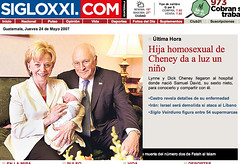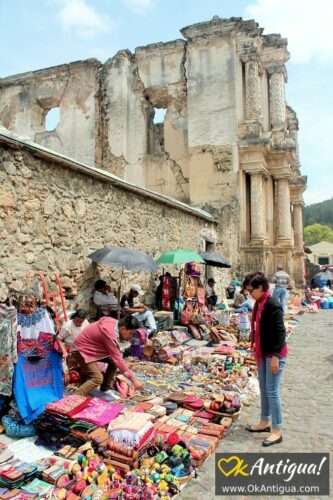Short History of Gay Guatemala
"Guatemala A republic in Central America with the third largest area in the region, Guatemala is, after Mexico, the largest of the Central American countries in population, with about 11.5 million people. Homosexuality was made illegal by the Spanish conquest (1524). It was decriminalized in the nineteenth century, but it was not until the 1960s and 1980s that more open-minded attitudes toward homosexuality began to appear within Guatemalan society as a whole.
The Colonial Period
After the Spanish conquest, the administrative entity called Captaincy General of Guatemala comprised an area that today comprehends six countries (Belize, Costa Rica, El Salvador, Guatemala, Honduras, and Nicaragua). The Spaniards condemned the same-sex sexual practices that were common among many of the Mayan peoples and promulgated the Christian sexual ethic that only heterosexual relations in marriage were acceptable sexual behavior.
The Spanish colonial period ended in 1821, but the cultural hegemony of the Catholic Church remained until 1871, when a liberal revolution took place. Through all the "ecclesiastical period," homosexuality was illegal and persecuted under statutes forbidding "sodomy" or "pecado nefando." The law covered both male and female homosexual acts, but only male cases were indicted. Female homosexuality was invisible to the male-centered establishment.
Although homosexual acts were illegal, the penalties were rather mild. Natives were regarded as minors under the law, and thus they were not actually tried for sexual offenses. Instead, they were subjected to sermons and lectures.
The more common offenders during this period were friars and priests, but if they were sentenced for violating these statutes (which very seldom happened), their jail terms of six months to four years were served in their monasteries or religious houses, not in secular prisons.
The Revolution of 1871
In 1871 a vast reorganization of the Guatemalan state began. The state abandoned the colonial discourse and changed the laws that had been dictated by the Catholic Church. French ideas and concepts replaced the old ones. As part of this revolution, homosexuality was decriminalized on the constitutional grounds that private sexual acts between consenting adults were not the concern of the state.
The law changed, but a culture that despised homosexuals and homosexuality remained for many decades. Denigrating jokes about homosexual relations were common in families and even in the newspapers.
It was not until the late 1930s that a noted lesbian, Julia Quiñones, began a cultural club composed of gay men and herself. The activities of this group were very discreet, consisting mostly of reading and discussing poetry. Nevertheless, it was a beginning.
The 1950s and 1960s
In the 1950s, the attitudes of Guatemalan society began to change. After the surgical sex-change of Christine Jorgensen in the winter of 1952-1953, a timid discussion of sex in general began to take place in the media. The most important of the newspapers, El Imparcial, published for some months a weekly page about the "third sex."
This opening was expanded during the presidential tenure (1958-1963) of General Miguel Ydigoras, who appointed some noted homosexuals to important administrative offices.
From the AIDS Panic to Today
The AIDS epidemic of the early 1980s found the Guatemalan glbtq community without any cultural, social, or political organizations. At that time there really was no glbtq community. Moreover, the AIDS pandemic had a very negative effect on attitudes toward homosexuality.
However, in the 1990s a few political organizations appeared. The most significant of these was the Colectivo Gay de Guatemala that in October 2000 changed its name to Guatemalan Gay, Lesbian, Bisexual, Transsexual and Transgender Community. It has subsequently grown to become an important voice in Guatemala.
However, despite this new political voice, crimes against homosexuals continue to be a serious problem. Moreover, they do not receive the same attention from the authorities that other crimes do. Several transvestites were murdered, and the crimes were not seriously investigated by the police.
Thanks to the valiant struggle of activists to counter a long tradition of intolerance and machismo, Nicaragua now has a more visible glbtq community than ever before."
Bibliography
-Morales, Oscar. Al final del arcoiris. Guatemala City: Editorial Oscar de León Palacios, 2003.
-Whitam, Frederick L. Male Homosexuality in Four Societies: Brazil, Guatemala, the Philippines, and the United States. New York: Praeger, 1986.
South Carolina Measles Outbreak Continues To Worsen
-
Charleston’s Fox affiliate reports: Fifteen new cases of measles have been
reported in South Carolina’s Upstate, as the state’s outbreak continues to
wor...
28 minutes ago

























_-_James_Tissot_-_overall.jpg)
















1 comment:
I like to think that I learn something every day. Thank you leonardo, the article was enlightening. As a student of social revolutionary thought this adds to my knowledge. I appreicate both this information and the person who wrote it!
Post a Comment